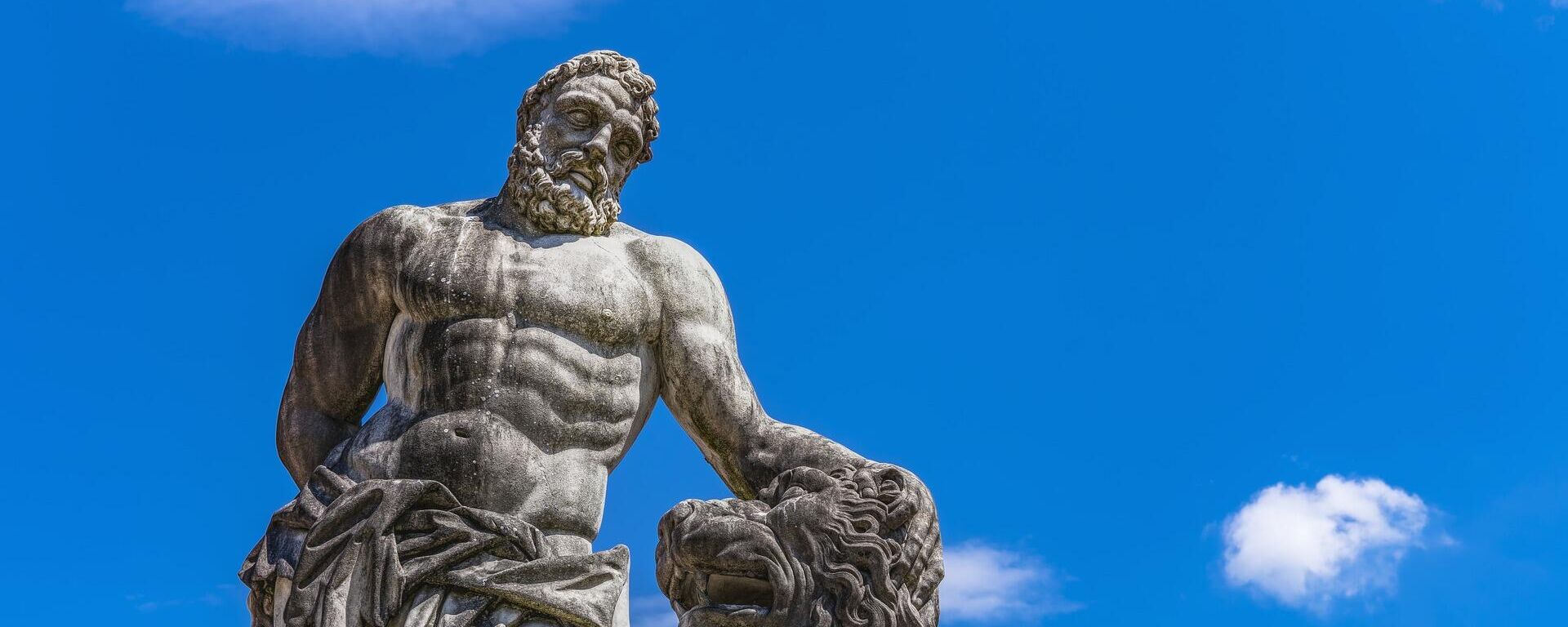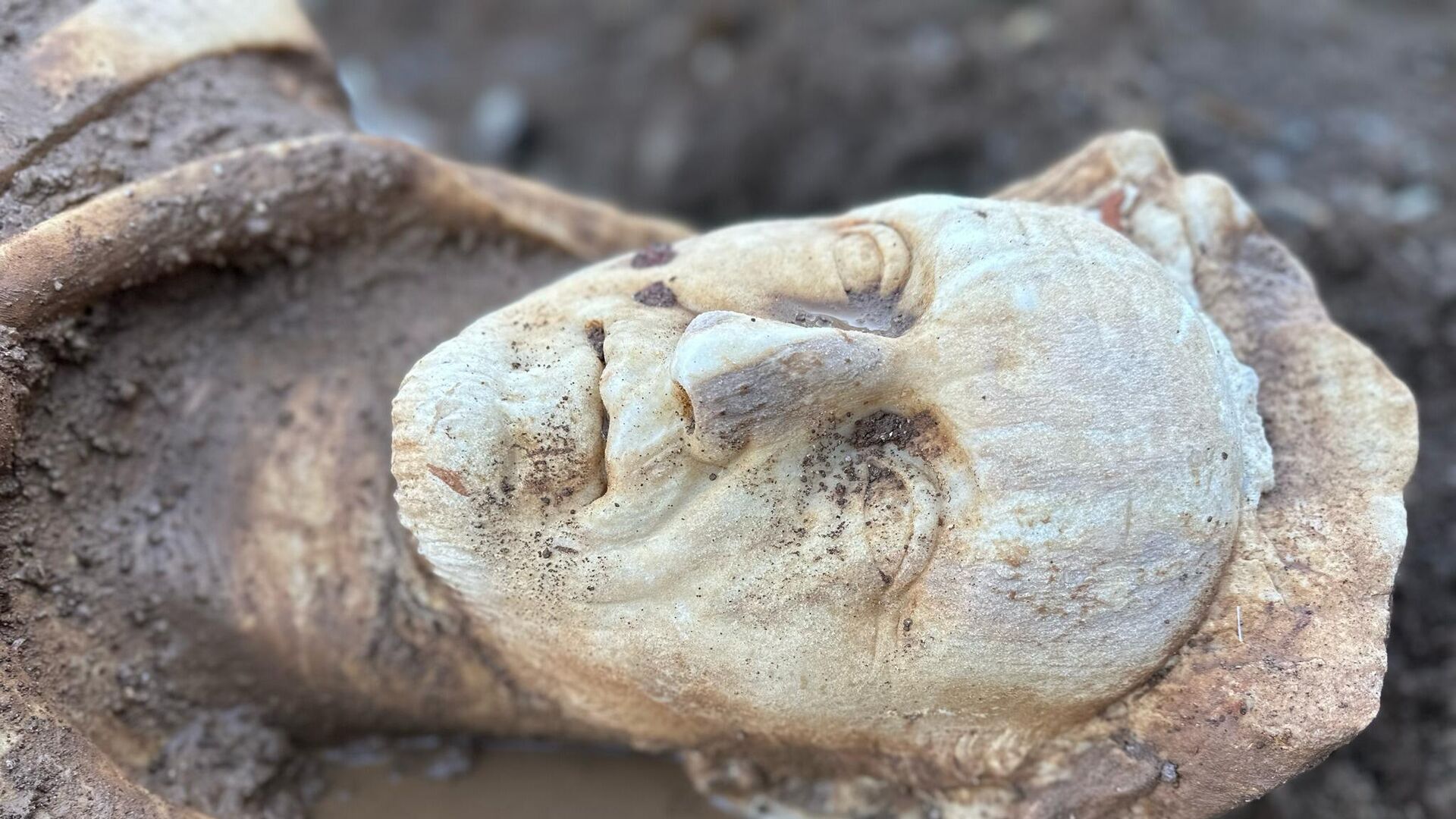https://sputnikglobe.com/20230127/ancient-life-size-hercules-statue-found-in-rome-amid-sewer-repair-1106775841.html
Ancient 'Life-Size' Hercules Statue Found in Rome Amid Sewer Repair
Ancient 'Life-Size' Hercules Statue Found in Rome Amid Sewer Repair
Sputnik International
Hercules is equivalent to the Greek mythological figure Heracles and was the son of Jupiter (Zeus in Greek mythology) and the human Alcmena.
2023-01-27T21:19+0000
2023-01-27T21:19+0000
2023-01-27T21:13+0000
world
hercules
rome
ancient rome
archaeology
https://cdn1.img.sputnikglobe.com/img/07e7/01/1b/1106775695_0:0:2048:1153_1920x0_80_0_0_536adf496fa05aae2626679115a82c39.jpg
A "life-sized" marble statue of Hercules was recently unearthed in Italy amid ongoing repairs to the sewage system in Rome, authorities have revealed.The statue dates back to the Imperial period of Rome, roughly between 27 BC and 476 AD. Crews were excavating the area to repair a sewer pipe that had collapsed under a park in Rome, which was causing mudslides and fissures in the ground.The excavation, which reached a depth of around 65 feet in some areas, was observed by archeologists, a common practice in Rome. Experts were able to confirm the statue represented Hercules because of “the club and the lion’s coat covering [the statue’s] head.”But they say the statue was not discovered in the area the ancient Romans likely displayed it. Instead, they believe the statue was buried there during the construction of the sewer system in the first half of the 20th century.The statue was found along the Appian Way, an ancient road that runs from Rome to the southeastern region of Italy. The road was critical to Rome’s conquest of Southern Italy and was used to transport military supplies. Italy is currently trying to get the road designated as a World Heritage site by UNESCO.A separate dig alongside the Appian Way, also known as Regina viarum, or queen of the roads, revealed other archaeological finds, including a first-century marble head of a man, ceramic fragments, coins and jewelry. However, archaeologists were unable to find what they were looking for - the start of the Appian Way. The Hercules statue was found near the second-mile marker of the road, but the starting point remains a mystery for Roman historians.The dig looking for the start of the road did find remnants of a 10th-century Medieval road, leading credence to the theory that the Appian Way, or at least a road alongside it, was still in use during that period.
https://sputnikglobe.com/20220107/spanish-archaeologists-claim-to-have-discovered-temple-of-hercules-1092091403.html
rome
ancient rome
Sputnik International
feedback@sputniknews.com
+74956456601
MIA „Rossiya Segodnya“
2023
News
en_EN
Sputnik International
feedback@sputniknews.com
+74956456601
MIA „Rossiya Segodnya“
Sputnik International
feedback@sputniknews.com
+74956456601
MIA „Rossiya Segodnya“
hercules, hercules statue, found in, sewer, rome, appian way
hercules, hercules statue, found in, sewer, rome, appian way
Ancient 'Life-Size' Hercules Statue Found in Rome Amid Sewer Repair
Hercules is equivalent to the Greek mythological figure Heracles and was the son of Jupiter (Zeus in Greek mythology) and the human Alcmena.
A "life-sized" marble statue of Hercules was recently unearthed in Italy amid ongoing repairs to the sewage system in Rome, authorities have revealed.
The statue dates back to the Imperial period of Rome, roughly between 27 BC and 476 AD. Crews were excavating the area to repair a sewer pipe that had collapsed under a park in Rome, which was causing mudslides and fissures in the ground.
The excavation, which reached a depth of around 65 feet in some areas, was observed by archeologists, a common practice in Rome. Experts were able to confirm the statue represented Hercules because of “the club and the lion’s coat covering [the statue’s] head.”
But they say the statue was not discovered in the area the ancient Romans likely displayed it. Instead, they believe the statue was buried there during the construction of the sewer system in the first half of the 20th century.
“At the time there were no archaeological checks, so it could happen,” Francesca Romana Paolillo, a member of Italy’s Ministry of Culture, told local media. She says it is unlikely the statue actually represents the mythological figure and instead showcases a person dressed as Hercules.
The statue was found along the Appian Way, an ancient road that runs from Rome to the southeastern region of Italy. The road was critical to Rome’s conquest of Southern Italy and was used to transport military supplies. Italy is currently trying to get the road designated as a World Heritage site by UNESCO.

7 January 2022, 11:55 GMT
A separate dig alongside the Appian Way, also known as Regina viarum, or queen of the roads, revealed other archaeological finds, including a first-century marble head of a man, ceramic fragments, coins and jewelry. However, archaeologists were unable to find what they were looking for - the start of the Appian Way. The Hercules statue was found near the second-mile marker of the road, but the starting point remains a mystery for Roman historians.
The dig looking for the start of the road did find remnants of a 10th-century Medieval road, leading credence to the theory that the Appian Way, or at least a road alongside it, was still in use during that period.



